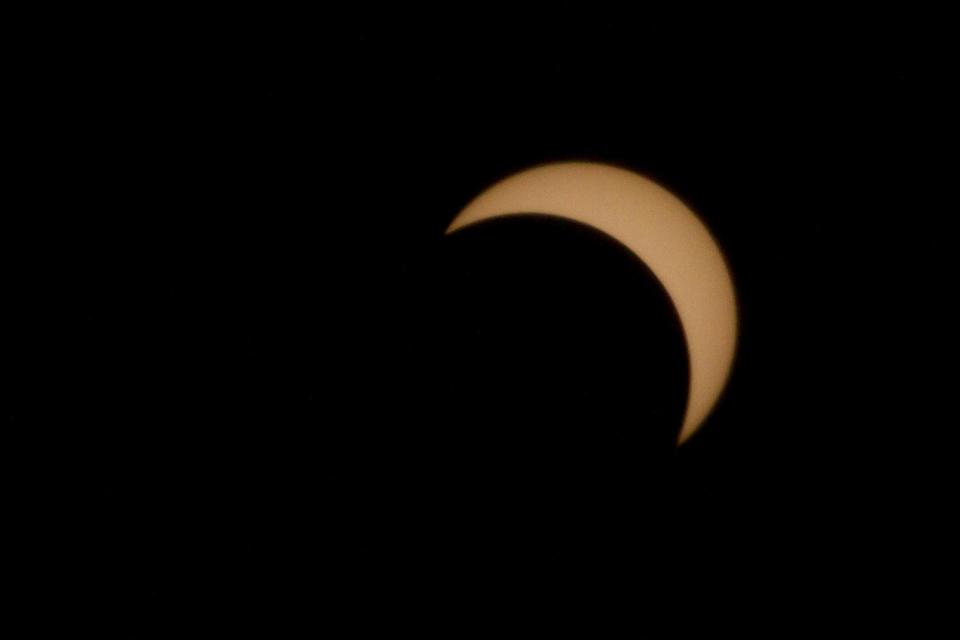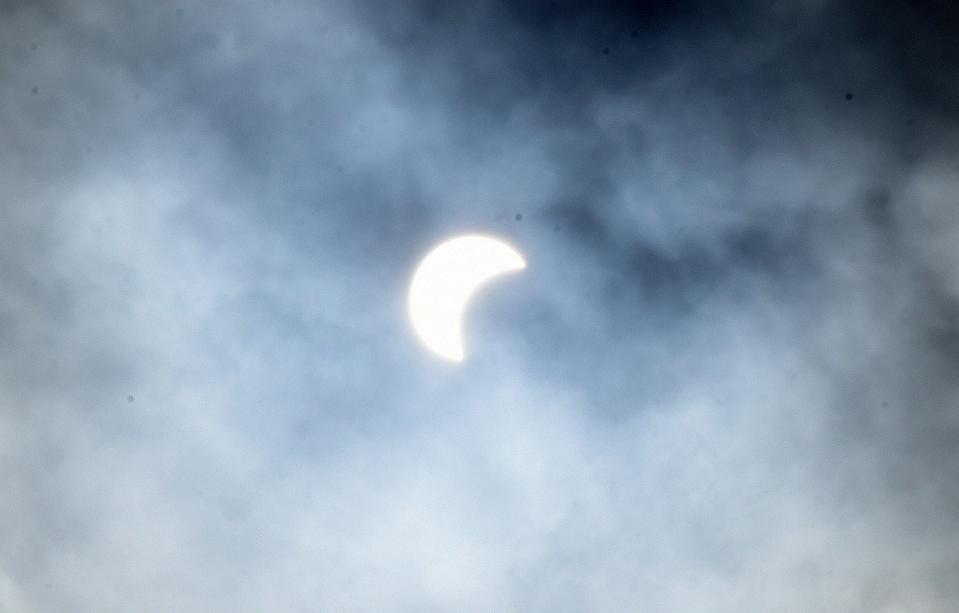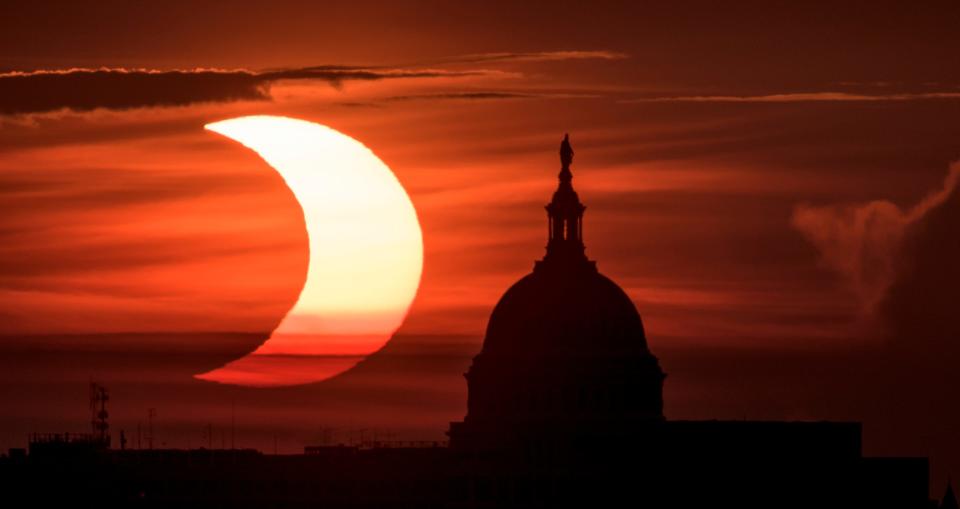Want to head out of town for a better view of the April solar eclipse? Here's where to go
Although the path of totality for the total solar eclipse isn’t hitting Delaware this time around, it doesn’t mean you can’t pack up and go to the path of totality.
While you’ll still be able to catch a partial eclipse here in the Small Wonder, we know how exciting it is to witness a total eclipse in person.
If you plan to ditch Delaware and flock to the cities in the path of totality, here’s some information to help you plan your eclipse travel.
What is a total solar eclipse?

During a total solar eclipse, the moon passes between the sun and Earth and completely blocks the face of the sun, according to NASA.
No matter the time of day it is, the sky will darken as if it were dawn or dusk. Weather permitting, people along the path of totality will see the sun’s corona, the outer atmosphere, which is usually obscured by the bright face of the sun.
When is the total solar eclipse?

The next total solar eclipse is on Monday, April 8.
The duration of totality will last four minutes and 27 seconds, nearly double that of the total solar eclipse seen in the United States in 2017, according to Great American Eclipse.
Although the next total solar eclipse will be visible elsewhere on Aug. 12, 2026, if you miss out on April 8, the next total solar eclipse visible from the contiguous U.S. won’t arrive until Aug. 23, 2044.
What time will the total solar eclipse happen?
The path of totality — when the moon completely covers the sun, creating a total eclipse — runs from Mexico (Sinaloa to Coahuila) to the United States (Texas to Maine) to Canada (Ontario to Newfoundland), according to TimeandDate.com.
The following U.S. cities are in the path of totality, according to NASA:
Dallas, Texas
Idabel, Oklahoma
Little Rock, Arkansas
Poplar Bluff, Missouri
Paducah, Kentucky
Carbondale, Illinois
Evansville, Indiana
Cleveland, Ohio
Erie, Pennsylvania
Buffalo, New York
Burlington, Vermont
Lancaster, New Hampshire
Caribou, Maine

Areas near these cities will experience a partial eclipse before and after the time totality is expected. A partial eclipse will be visible across nearly all of the U.S. and a small portion of western Europe.
Global eclipse events will occur at the following local times:
Partial eclipse will first be visible at 11:42 a.m.
Full eclipse will first be visible at 12:38 p.m.
Maximum eclipse will be visible at 2:17 p.m.
Full eclipse will last be visible at 3:55 p.m.
Partial eclipse will last be visible at 4:52 p.m.
The total solar eclipse will be visible at 4:41 p.m., which only 0.55% of the population, or 43,800,000 people, will be able to see worldwide in areas where the eclipse is visible. As for any part of the eclipse, not just totality, 8.19% of the population, or 652,000,000 people, will be able to tune in, according to TimeandDate.com.
Where to travel to see the path of totality
Although any city in the path of totality will be a decent distance away from Delaware, the closest options for a short eclipse getaway will be Cleveland, Ohio; Erie, Pennsylvania; Buffalo New York; and Burlington, Vermont.
Times of maximum totality for the cities are as follows:
Cleveland hits totality at 3:15 p.m.
Erie hits totality at 3:18 p.m.
Buffalo hits totality at 3:20 p.m.
Burlington hits totality at 3:27 p.m.
Eclipse events bring a rush of tourists to whichever cities will be in the path of totality, and this year’s total solar eclipse in April is no different.
Your best bet for getting a front-row seat for the eclipse is to book your travel plans early, ensuring you can nab a place to stay that is in or near the path of totality.

If you don’t mind a short drive, you also can book your stay in a smaller, neighboring area and drive to local watch parties, parks or viewing events on the day of the eclipse.
Dayton, Ohio; Akron, Ohio; Rochester, New York; portions of Syracuse, New York; Kingston, Vermont, along with other northwestern portions of the state; and smaller cities near the aforementioned locations in each state are all completely or partially within the path of totality.
Opting to stay in more lowkey areas, as opposed to the major eclipse cities, will lend itself to fewer crowds and more rooming options, and may also save you some money on travel.
Unsure if the place you’re staying in will be close enough to watch the eclipse? Use an online map of the path of totality to check how close you’ll be to the action and at what time totality will hit the area.
Got a tip or a story idea? Contact Krys'tal Griffin at [email protected].
Total solar eclipse details: A total solar eclipse will be visible in the U.S. this spring for the first time in 7 years
Where to watch the eclipse in Delaware: The total solar eclipse will be here soon. Here's where you can plan to watch in Delaware
This article originally appeared on Delaware News Journal: Where to travel to see the path of totality during total solar eclipse
